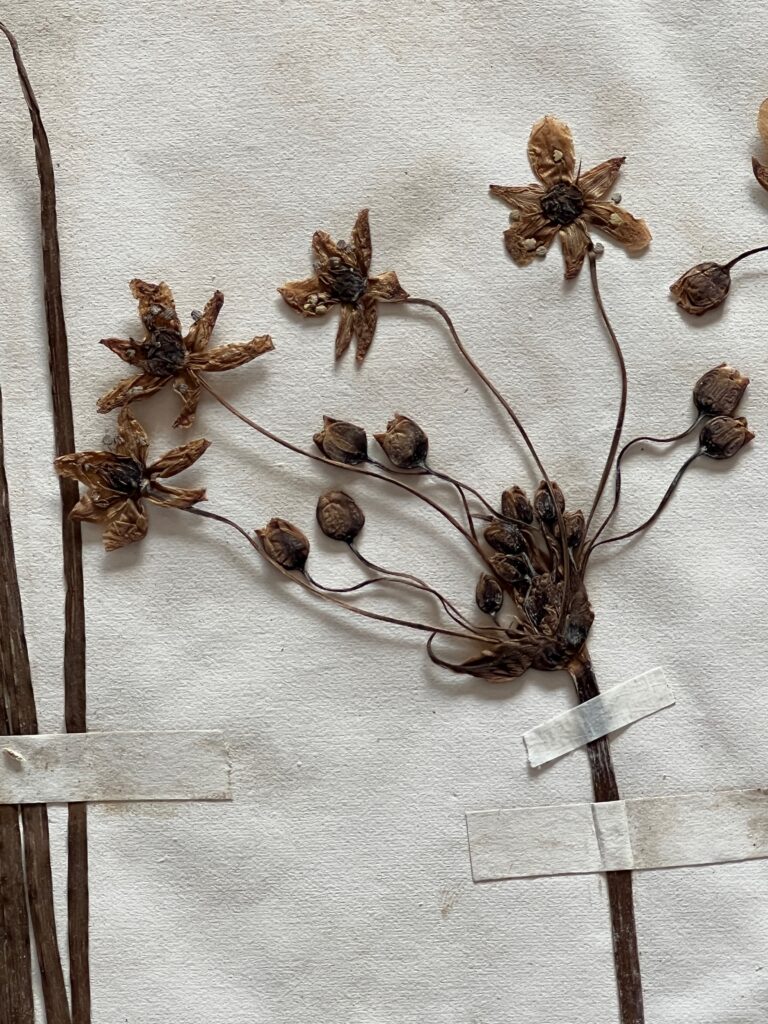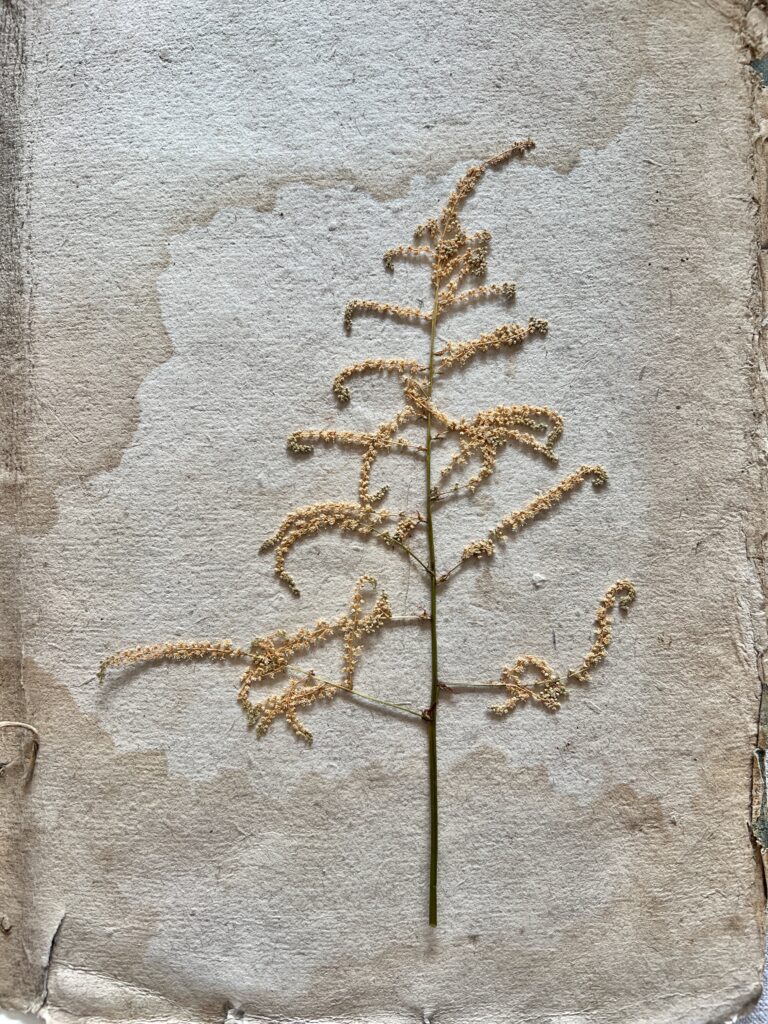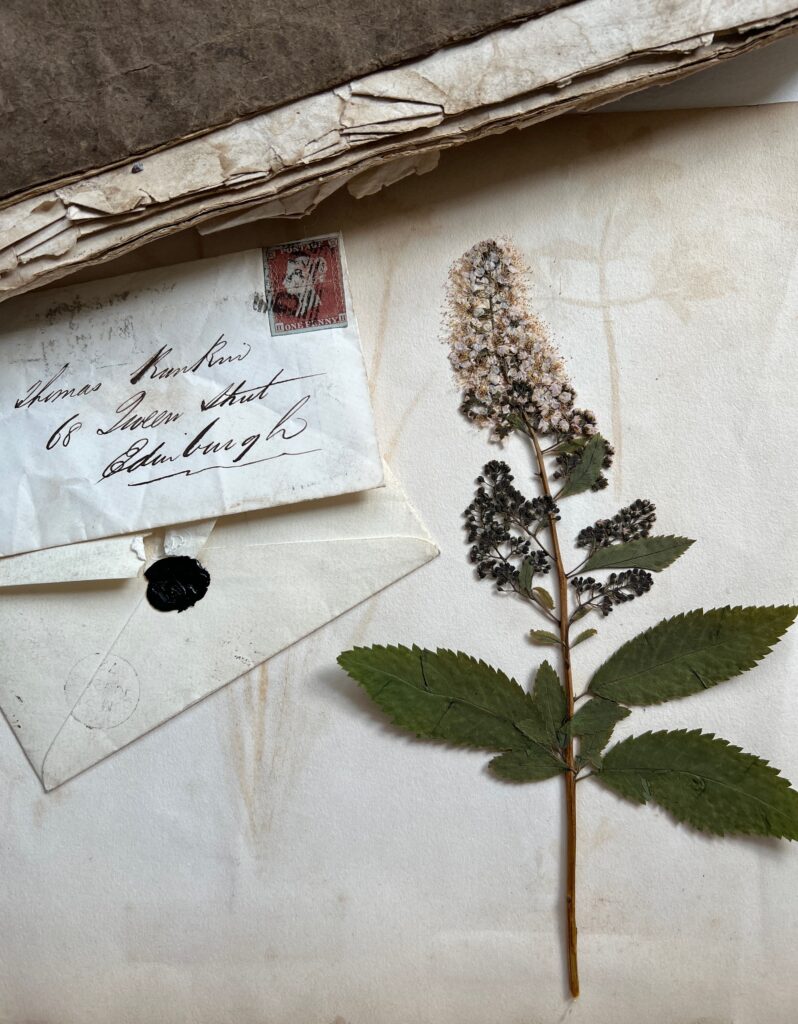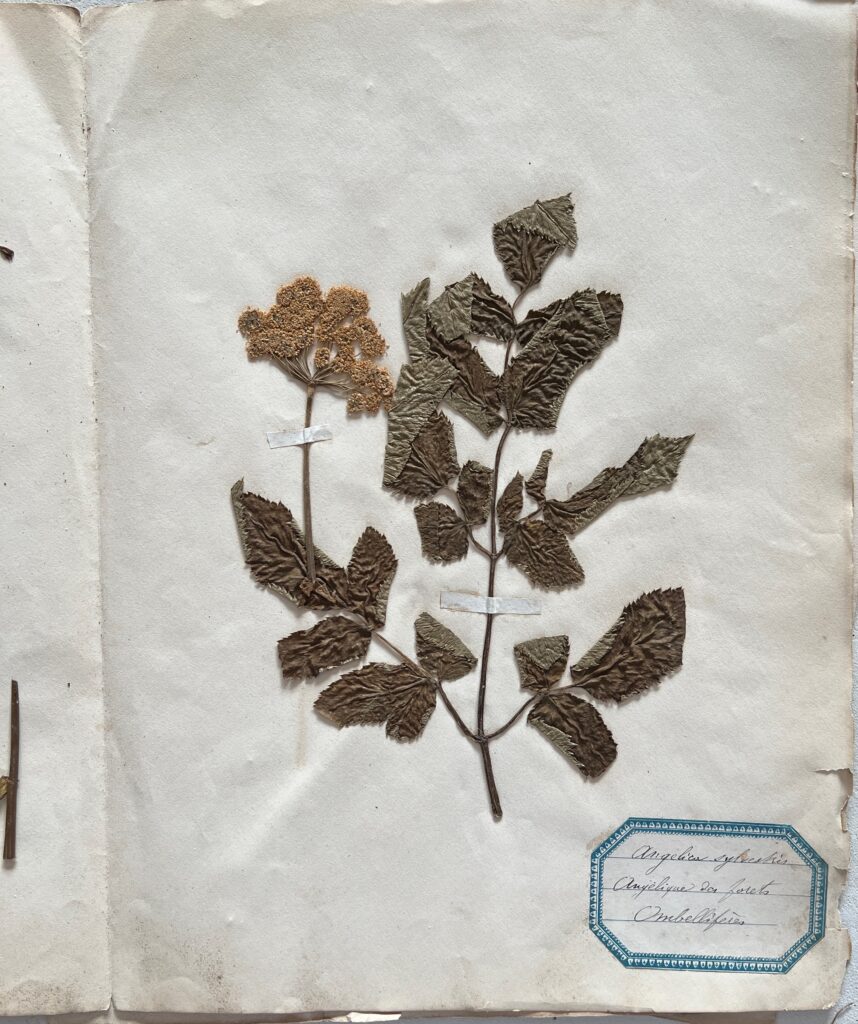Observe, collect, preserve…stitch
An extract from an Inspiration Board article about creating ‘a smiling garden of everlasting flowers’ with gathered specimens, with tips about taking the project a stage further by capturing the results in stitch.
'A herbarium is better than any illustration: every botanist should have one...'
— Carl Linnaeus

On the right is a spray of astilbe rubra. As its name suggests, it was a deep pinky red when live.

So what is a herbarium, herbier, hortus siccus or dried garden? It is the art of preserving plant matter in dried form, taped onto large sheets of ‘whited paper’ rather than a brown paper which can spoil the plants. It is a practice that has changed little since it began in the early part of the sixteenth century. The labels alone are often miniature works of calligraphic art. Herbarium sheets are beautiful but they are also a valuable scientific resource.

Starting a herbarium
Who hasn’t pressed a flower, either using a flower press or, for sentimental reasons, slipped between the pages of a book? Is there anything more touching than opening a vintage book and finding a papery, faded flower, wondering who preserved it so, and why?
Pressed flowers, grasses and other plant material are inspiring for the embroiderer. Freshly picked, their three-dimensional forms can be hard, perhaps impossible, to capture without, as May Morris suggested, creating a ‘libellous caricature having less resemblance to the real thing than the fearless images with a blunt pencil done by a child, whose drawings are symbols of what his eyes see…’

